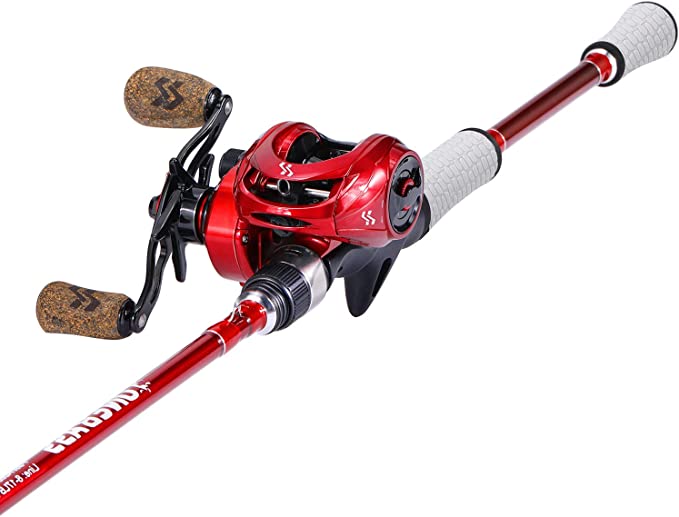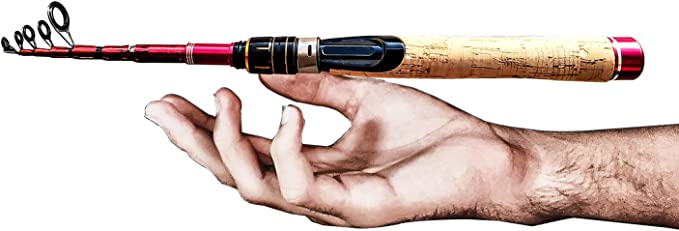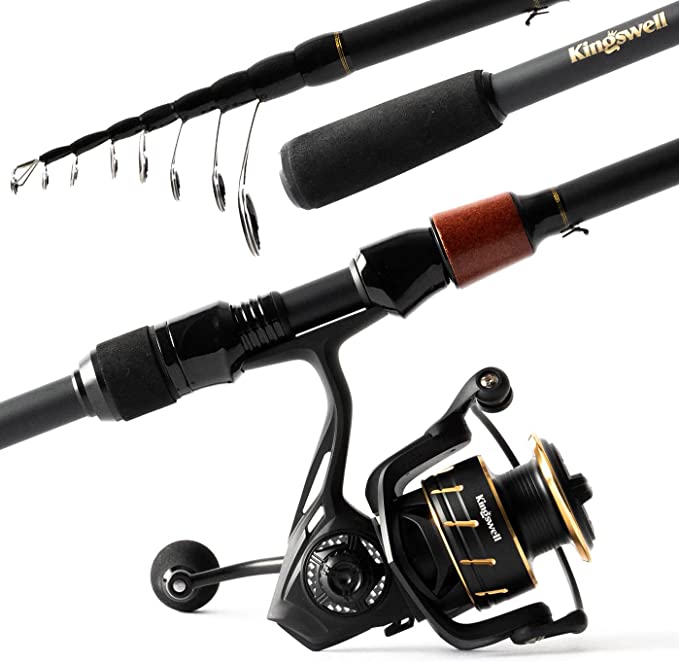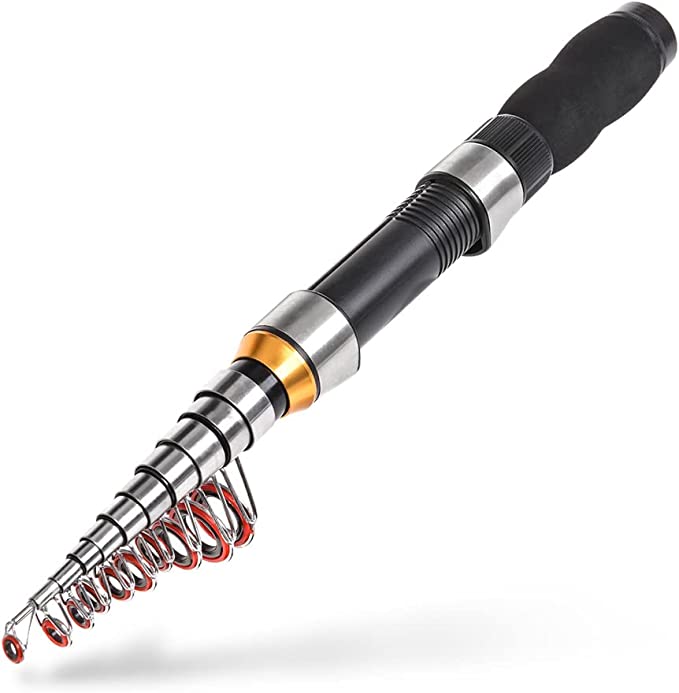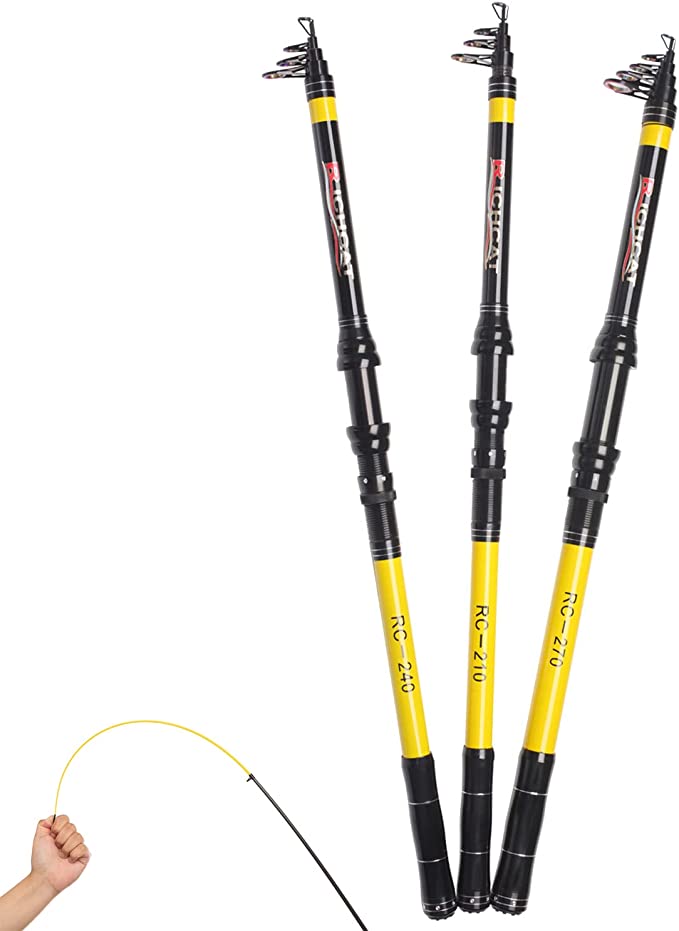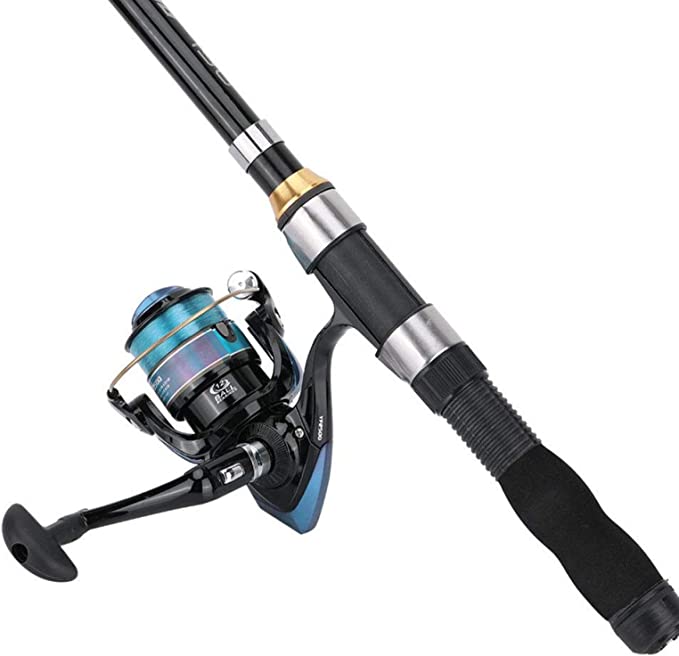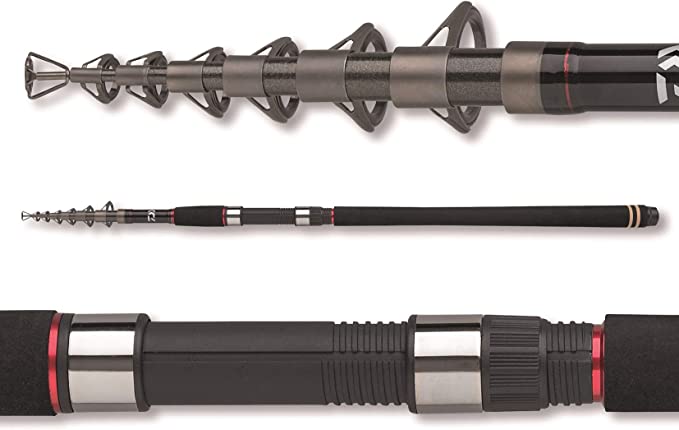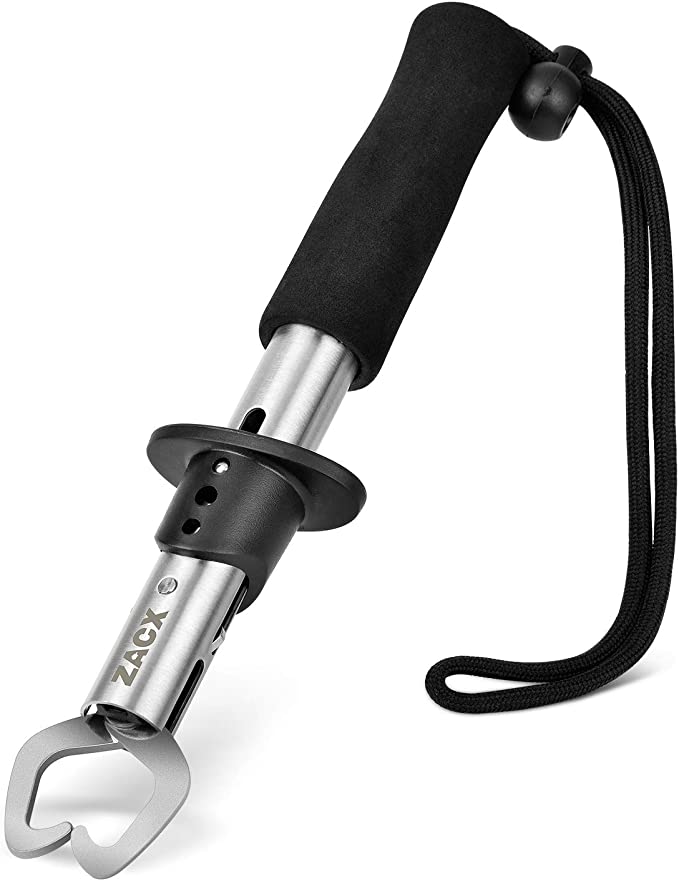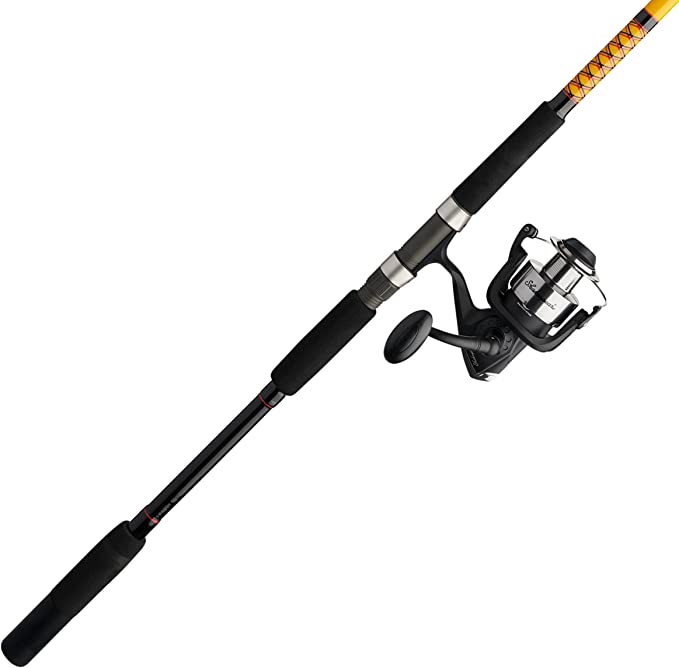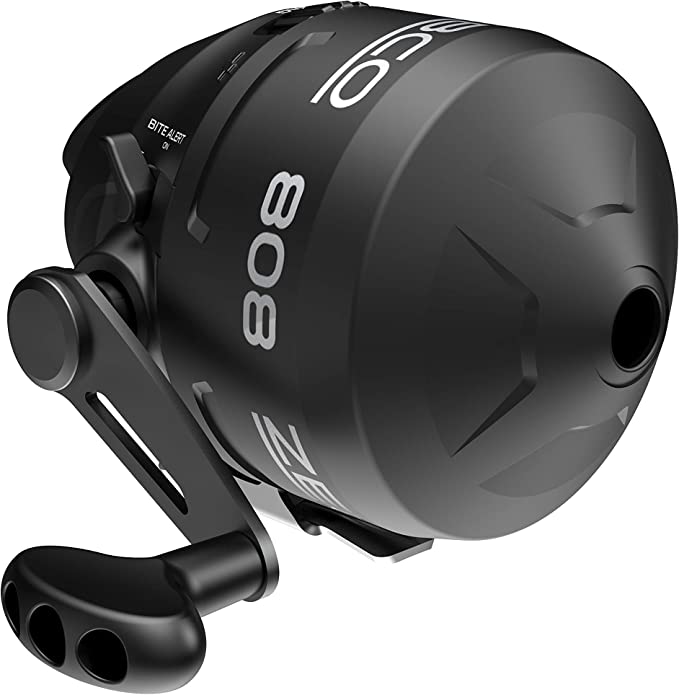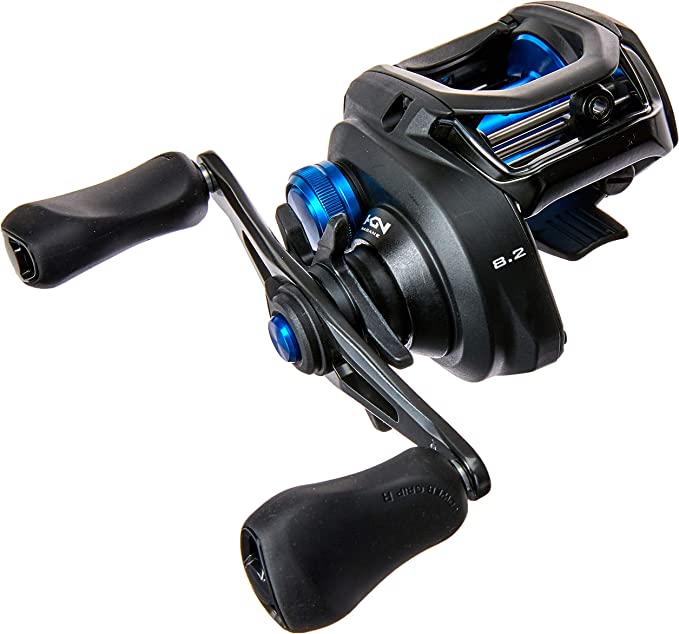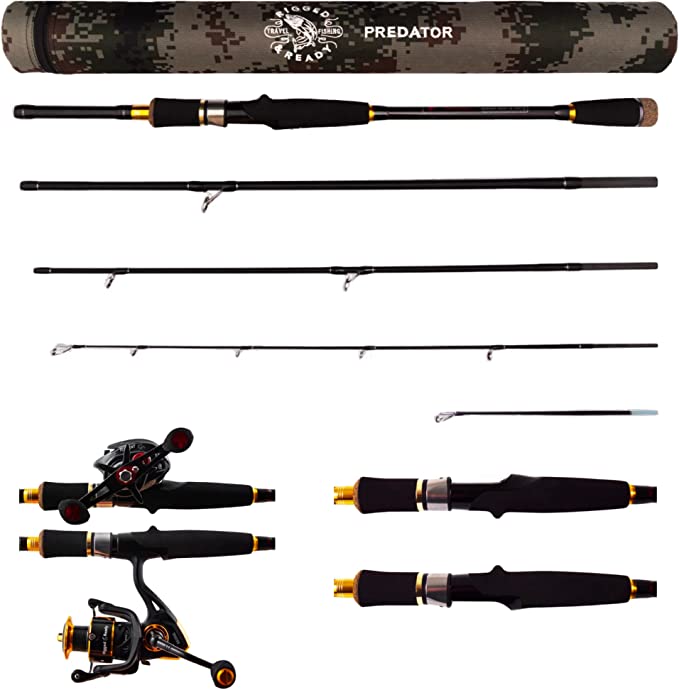ZACX Fishing Rod and Reel Combos: Your All-in-One Solution for Travel Fishing
Update on Feb. 12, 2025, 5:40 p.m.
A Tight Spot and a Spark of Curiosity
Imagine you’re planning a backpacking trip. You envision pristine mountain lakes teeming with trout, and the thought of casting a line at sunrise fills you with anticipation. But then reality hits: how are you going to pack all that fishing gear? Traditional fishing rods are long, unwieldy, and a nightmare to transport. This is the dilemma that many anglers, especially those who love to travel, face. It’s also a perfect starting point for exploring the fascinating science behind modern fishing equipment.

Beyond Bamboo: The Evolution of Fishing Rods
For centuries, fishing rods were simple affairs, often made from bamboo or other flexible woods. While effective, these materials had limitations. They could be heavy, prone to breakage, and lacked the sensitivity needed to detect subtle bites. The quest for better materials led to the development of fiberglass rods in the mid-20th century, offering improved strength and flexibility. But the real revolution came with the introduction of carbon fiber.
Carbon Fiber: Strength in Strands
What makes carbon fiber so special? It all comes down to the atomic level. Carbon atoms have a unique ability to form strong bonds with each other, creating long, chain-like molecules. These molecules align themselves in a crystalline structure, forming fibers that are incredibly strong and stiff for their weight.
To create a carbon fiber fishing rod, these fibers are typically embedded in a resin matrix, like a skeleton within a body. The resin holds the fibers together and protects them from damage. The arrangement of the fibers, the type of resin used, and the manufacturing process all influence the final properties of the rod.
Think of it like weaving a fabric. Different weaving patterns create fabrics with different properties, like the softness of cotton versus the durability of denim. Similarly, different arrangements of carbon fibers result in rods with different levels of stiffness, strength, and sensitivity. The ZACX rod, for example, uses a high-density carbon fiber construction, meaning the fibers are tightly packed, resulting in a rod that is both strong and responsive.
This is where the term “modulus” often comes into play in fishing rod descriptions. Modulus refers to the stiffness of a material – how much it bends under a given force. Higher modulus carbon fiber is stiffer, requiring more force to bend. While high modulus sounds desirable, it’s not always better. Extremely high modulus rods can be brittle and more prone to breaking under sudden stress. A balance must be struck between stiffness, strength, and durability.

Spinning Reels: Gears, Bails, and Smooth Action
The spinning reel, a marvel of miniature engineering, is another crucial component of a modern fishing setup. It’s a far cry from the simple spools used in earlier times. The ZACX combo includes a spinning reel designated as “HA3000.” This likely refers to a size classification, with 3000 being a common size for general freshwater fishing, suitable for bass, trout, and similar species.
The heart of a spinning reel is its gear system. The “5.2:1” gear ratio mentioned in the product description refers to the number of times the spool rotates for every one turn of the handle. A 5.2:1 ratio is considered a moderate retrieve speed, offering a good balance between power and speed. A higher ratio (like 6.2:1) retrieves line faster, suitable for fast-moving lures. A lower ratio (like 4.8:1) provides more power for fighting larger fish.
The spinning reel’s bail arm is the wire loop that flips open and closed. When open, it allows line to freely flow off the spool during a cast. When closed, it guides the line onto the spool as you reel. Inside the reel, a series of gears, bearings, and a drag system work together to ensure smooth operation and control. The drag system is particularly important, as it allows you to adjust the resistance the reel provides when a fish pulls on the line, preventing the line from breaking.
The Line of Connection: Braided vs. Mono vs. Flouro
The ZACX combo comes with braided fishing line, a significant upgrade from the traditional monofilament line (often just called “mono”). Monofilament is a single strand of nylon, while braided line, as the name suggests, is made of multiple strands of synthetic fibers, often polyethylene (PE), woven together.
Each type of line has its pros and cons. Monofilament is inexpensive, stretches easily (which can be good for absorbing shock), and is relatively abrasion-resistant. However, it also has “memory,” meaning it tends to retain the coiled shape of the spool, which can affect casting distance and accuracy.
Braided line, on the other hand, has very little stretch. This makes it incredibly sensitive, allowing you to feel even the slightest nibble. It also has higher strength for a given diameter, meaning you can use a thinner line that casts further. However, braided line can be more visible to fish in clear water, and it’s more prone to tangling if not handled carefully.
Fluorocarbon line is another option, known for its near invisibility underwater. It’s also very abrasion-resistant, making it a good choice for fishing around rocks or other structures. However, it tends to be stiffer than monofilament and can be more expensive. The best choice of line depends on the fishing conditions, the target species, and personal preference.
Lures: Mimicry and the Art of Deception
The tackle box included with the ZACX combo contains a variety of lures, both hard and soft. Lures are artificial baits designed to mimic the prey of fish. Hard lures, like crankbaits and spoons, are typically made of plastic or metal and create vibrations and flashes in the water to attract fish. Soft plastic lures, like worms and grubs, are designed to imitate the look and feel of real worms, insects, or other small creatures.
The choice of lure depends on a number of factors, including the type of fish you’re targeting, the water conditions, and the time of year. For example, bass are often attracted to fast-moving lures that create a lot of vibration, while trout may prefer smaller, more subtle lures. Learning to select the right lure is an art in itself, requiring observation, experimentation, and an understanding of fish behavior.
Fishing, a Timeless Pursuit, a Responsibility to Nature.
Fishing is one of humanity’s oldest pursuits, dating back tens of thousands of years. It’s more than just a way to obtain food; it’s a connection to nature, a test of skill, and a source of relaxation and recreation. But with this timeless pursuit comes a responsibility to protect the aquatic environment.
Responsible fishing practices include:
- Following regulations: Obeying catch limits, size restrictions, and seasonal closures.
- Using appropriate gear: Selecting gear that is strong enough to land fish quickly, minimizing stress and injury.
- Practicing catch and release: Releasing fish unharmed whenever possible, especially those that are not intended for consumption.
- Handling fish carefully: Using wet hands or a net to avoid damaging the fish’s protective slime coat.
- Leaving no trace: Packing out all trash and avoiding disturbing the natural environment.
- Respecting other anglers: Maintaining a safe distance and avoiding interfering with others’ fishing.
The Future of Fishing Gear
The ZACX travel rod and reel combo represents a significant advancement in fishing technology, offering portability, convenience, and performance. But the evolution of fishing gear is far from over. We can expect to see even lighter and stronger materials, more sophisticated reel designs, and perhaps even “smart” fishing gear that incorporates sensors and data analysis to help anglers locate and catch fish.
The key is that, as technology progresses, we shouldn’t lose sight to what makes fishing a wonderful pastime. The science enhances the experience. It never replaces it.


